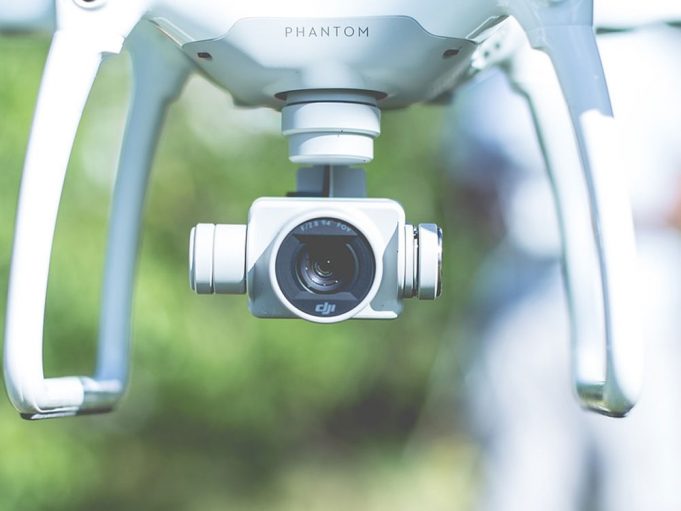Drones are making themselves useful in a wide variety of industries and occupations — on construction sites, in roofing, with reforestation and even in settling property insurance claims. Drones are also starting to be used frequently to film sporting events. One the cutting edge of this trend, several organizations have been using drones to livestream and umpire polo matches for a few years.
At 300 yards long and 160 yards wide, a polo field is the size of several football fields. Drones seem ideally equipped to keep an eye on the fast and furious action below, as eight players on horses — four on each side — charge up and down the field at speeds up to 35 miles per hour. Two umpires mounted on horses, and assisted by an off-field referee, strive to keep order but they can use all the help they can get since the pace of the scrambling can get frenetic, especially near the goalline.
“Because of the dynamic nature of our sport and the speed and distance involved, it is not always possible for an umpire to see every aspect of a play, even when the umpire is positioned correctly,” said umpire Fergus Gould, a former world-class polo player, and one of only a half-dozen or so umpires who can officiate polo at the highest le14vels anywhere in the world. He said sometimes it can be difficult to detect the slight deflection of the ball, or the spin after it lands, and even whether the ball passed over or between the goalposts.
Drones give additional perspective — useful in training and evaluating officials
“The drone gives us an additional perspective, which is particularly useful in training and evaluating umpires. In terms of real-time officiating of games, it is another tool that complements the procedures we already have in place,” he said.
The rules of the sport dictate that players and horses must line up parallel to the lead player, and that means umpires must always position themselves so they can read the location of that imaginary line. Even experienced officials benefit from seeing the drone’s unsparing footage.
Charles Muldoon, executive director of USPA Umpires LLC, said drones are adept at capturing every true line of the ball, speed, angle and distance. “We talk about positioning and you tell (umpires), ‘You’ve got to get close. You’ve got to get more on the right side. You’ve got to get more on the left side,’ and they kind of go, ‘Yeah, yeah, yeah,’” he said.
“Then the umpires see the drone footage that shows them out of position, and they’re going, ‘Oh my god.’ And it’s changed them for the better,” he commented to ESPN.
Although drones were first used in 2012 for the purpose of instant replay, their use is still in its infancy because of issues with electronic interference and the distance/positioning of the replay booth. “Currently, if it is a tough call or an ambiguous situation, it is the fourth official — the instant replay official in the booth — who sees the feed from the drone and relays the information to the off-field referee, who communicates with the onfield umpires,” Gould said.
As of now, drones are being used primarily in matches covered by the USPA Polo Network, a live-streaming service, and by Horseplay Productions, Polocam.tv, PoloLine, and Chukker.tv. NBC began televising polo in 2015 and since then has entered a three-year contract to broadcast the sport’s U.S. Open, East Coast Open and Pacific Coast Open.
Nationwide, there are nearly 30 collegiate polo teams and about 300 polo clubs, according to the United States Polo Association (USPA). The USPA also lists 344 annual tournaments and close to 5,500 members.
One barrier to the widespread use of drones is that filming a polo match is a very specialized skill. Players improvise moves suddenly, switching direction and speed in an instant, and the camera operator who does not understand the sport can easily lose the ball and miss the action.
Drones are still new enough to the scene that they can irritate and upset umpires and horses not used to them. And even though filming and officiating crews are enthusiastic about their potential, drones for now will continue to complement the umpires, not replace them.
Gould said drones don’t always see the action in context because of their limited field of view and their top-down perspective. “The footage can sometimes lack elements that allow for more accurate decision-making,” Gould said. “An example of this would be when a player enters the frame and is involved in a play — the officials may need to know where the player came from and how quickly the player was traveling in order to make an accurate call on the legality of the play.”
What's Your Call? Leave a Comment:
Note: This article is archival in nature. Rules, interpretations, mechanics, philosophies and other information may or may not be correct for the current year.
This article is the copyright of ©Referee Enterprises, Inc., and may not be republished in whole or in part online, in print or in any capacity without expressed written permission from Referee. The article is made available for educational use by individuals.


















